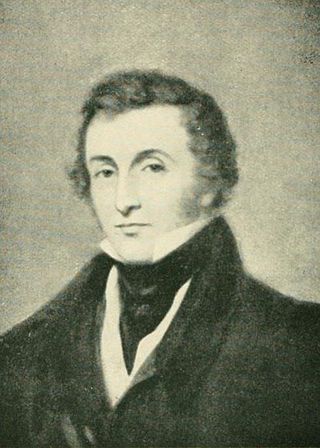
The Worshipful Company of Clockmakers was established under a royal charter granted by King Charles I in 1631. It ranks sixty-first among the livery companies of the City of London, and comes under the jurisdiction of the Privy Council. The company established a library and its museum in 1813, which is the oldest specific collection of clocks and watches worldwide. This is administered by the company's affiliated charity, the Clockmakers’ Charity, and is presently housed on the second floor of London's Science Museum. The modern aims of the company and its museum are charitable and educational, in particular to promote and preserve clockmaking and watchmaking, which as of 2019 were added to the HCA Red List of Endangered Crafts.

John Phillips FRS was an English geologist. In 1841 he published the first global geologic time scale based on the correlation of fossils in rock strata, thereby helping to standardize terminology including the term Mesozoic, which he invented.

Sir William Jardine, 7th Baronet of Applegarth FRS FRSE FLS FSA was a Scottish naturalist. He is known for his editing of a long series of natural history books, The Naturalist's Library.

Admiral Algernon Percy, 4th Duke of Northumberland,, styled Lord Algernon Percy from birth until 1816 and known as The Lord Prudhoe between 1816 and 1847, was a British naval commander, explorer and Conservative politician.

The Royal Meteorological Society is a long-established institution that promotes academic and public engagement in weather and climate science. Fellows of the Society must possess relevant qualifications, but Associate Fellows can be lay enthusiasts. Its Quarterly Journal is one of the world's leading sources of original research in the atmospheric sciences. The chief executive officer is Liz Bentley.

Sir William de Wiveleslie Abney was an English astronomer, chemist, and photographer.

Henry Peach Robinson was an English pictorialist photographer best known for his pioneering combination printing - joining multiple negatives or prints to form a single image; an early example of photomontage. He joined vigorously in contemporary debates in the photographic press and associations about the legitimacy of 'art photography' and in particular the combining of separate images into one.

Hugh Welch Diamond was an early British psychiatrist and photographer who made a major contribution to the craft of psychiatric photography.
The Bakerian Medal is one of the premier medals of the Royal Society that recognizes exceptional and outstanding science. It comes with a medal award and a prize lecture. The medalist is required to give a lecture on any topic related to physical sciences. It is awarded annually to individuals in the field of physical sciences, including computer science.

William Marsden was an Irish orientalist, numismatist, and linguist who served as Second, then First Secretary to the Admiralty during years of conflict with France.
George Edward Dobson FRS FLS FZS was an Irish zoologist, photographer and army surgeon. He took a special interest in bats, describing many new species, and some species have been named after him.

The Royal Photographic Society of Great Britain, commonly known as the Royal Photographic Society (RPS), is one of the world's oldest photographic societies. It was founded in London, England, in 1853 as the Photographic Society of London with the objective of promoting the art and science of photography, and in 1853 received royal patronage from Queen Victoria and Prince Albert.

Thomas Allan of Lauriston FRS FRSE FSA FLS was a British mineralogist.

Hugh Hamshaw "Ham" Thomas, MBE, FRS, FLS,, was a British paleobotanist.

An Abney level and clinometer is an instrument used in surveying which consists of a fixed sighting tube, a movable spirit level that is connected to a pointing arm, and a protractor scale. An internal mirror allows the user to see the bubble in the level while sighting a distant target. It can be used as a hand-held instrument or mounted on a Jacob's staff for more precise measurement, and it is small enough to carry in a coat pocket.
Major-General Edward Robert Festing, English army officer, chemist, and first Director of the Science Museum in London. He contributed to infrared spectroscopy research with Sir William Abney in the 1880s.
The British Journal of Photography (BJP) is a magazine about photography, published by 1854 Media. It includes in-depth articles, profiles of photographers, analyses, and technological reviews.
The Photographic Alliance of Great Britain is the umbrella organisation that provides benefits and co-ordinates specific events for the majority of photographic clubs and societies in England, Scotland, Wales & Northern Ireland.

The Australasian Photo-Review was an English language magazine, published for photographers by Baker & Rouse and later Kodak (Australasia), and published in Sydney, Australia 1894–1956.















